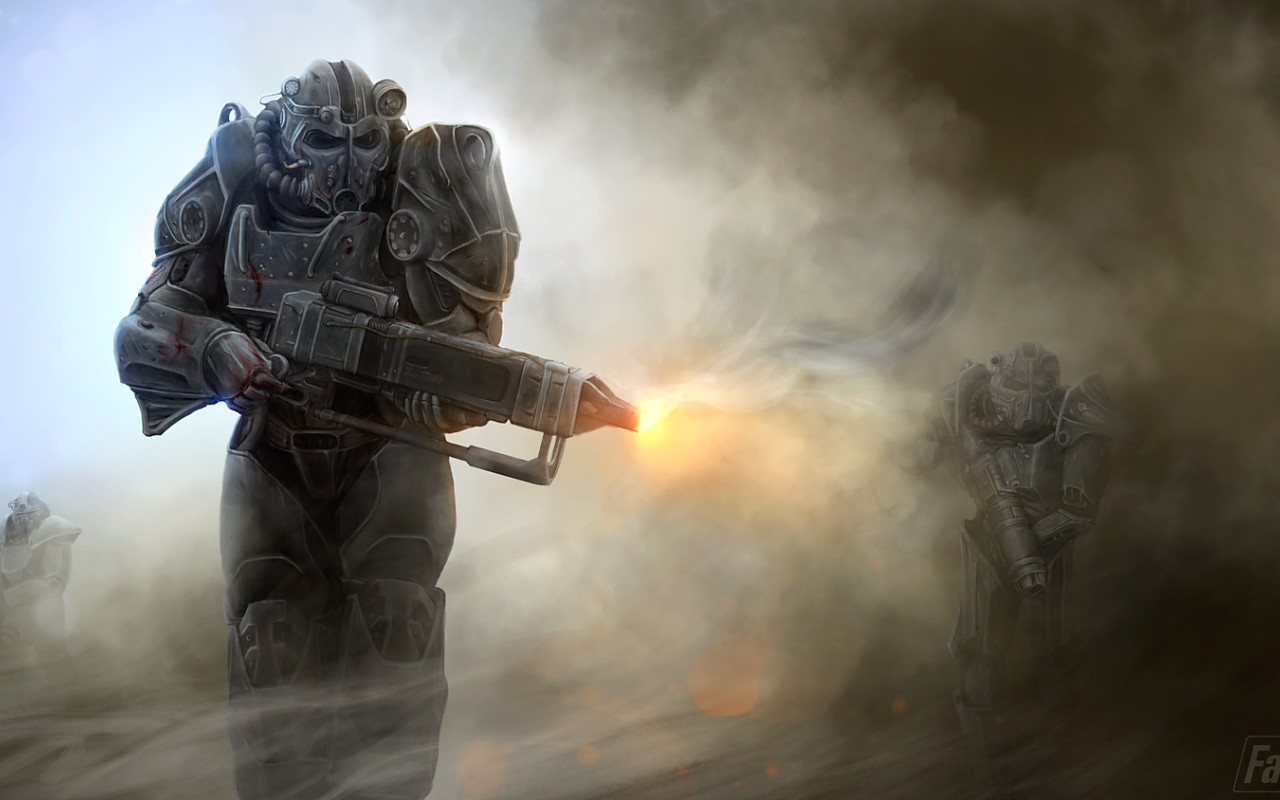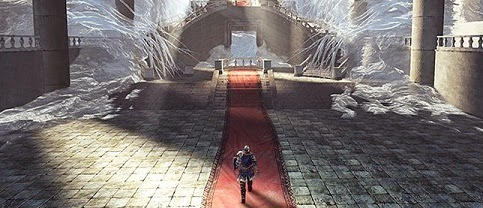

The 2012 FIA Formula One World Championship is nearly at an end (the final event takes place in Brazil on November 25th), but the races can go on and on in Codemasters‘ F1 2012. Available now for Xbox 360, PlayStation 3 and PC, F1 2012 includes every car, driver and circuit from this year’s World Championship. Does that mean the game is for Formula One fans only, or does this sim-racer deserve a wide, mainstream audience? Read on for our full review of F1 2012.
For years, the console sim-racing market has been dominated by two titles: Sony’s Gran Turismo and Microsoft’s Forza Motorsport. Both games feature scores of tracks, including many with alternate layouts, and a functionally limitless number of cars. Racing game fans accustomed to burning through tracks and collecting cars like they’re Pokemon may initially find F1 2012’s twenty tracks and twelve racing teams (each with two drivers) unfashionably slight, but make no mistake – there is nothing slight about F1 2012.
Unlike its sim-racer competition, F1 2012 isn’t an “everything for everyone” kind of game. It only does one thing, but it does that one thing very, very well: immerse players in the world of Formula One. Its recreations of the 2012 World Championship circuits are meticulous and believable. The view from the track is creditably vast, and the cars feel hugely powerful. F1 2012’s clean, stylish menus handily recreate the glossy aesthetics that define the sport’s television and web presentation. If you’re not already a fan of Formula One, this game could make you one.
Over the course of this generation, the word “accessible” has come to be synonymous with the word “easy.” That shouldn’t be the case. Tetris, for example, is hugely accessible, but on later levels, it’s hardly easy. F1 2012, on the other hand, is flat-out hard right from the start – hard as those proverbial nails. The same was true of Codemasters’ previous Formula One game, F1 2011 (read our review). For casual players, the challenge posed by F1 2012 may well prove insurmountable; unconquerable. Despite that, it’s a much more accessible game than its predecessor.
That accessibility doesn’t come in the form of a dumbed-down driving model or a field of listless, impotent competitors. Even with all assists enabled – and F1 2012 has plenty of them, including breaking assists, traction control, a dynamic racing line and the ability to “rewind” on-track events – and with the difficulty set to “Easy” (it goes up to “Expert”), merely staying on the track can be startlingly difficult. That is due, in no small part, to the sheer, blistering speed of the game. Sim-racers often get criticized for failing to deliver a truly visceral sense of velocity; compared to arcade influenced games like Split/Second or Burnout Paradise, they just don’t feel very fast. That’s not an issue with F1 2012. Formula One cars reach speeds in excess of 200 MPH, and in F1 2012, you feel that speed – indeed, the first few hours of playing are largely spent coming to grips with exactly that. But players will get used to it, after which the game opens up considerably.
F1 2012 solves the accessibility problem by offering players a number of inroads. At the core of the game sits an immersive Career Mode, which challenges players to compete in all twenty World Championship events across five seasons. It’s a lengthy, engrossing endeavor that’s practically a role-playing game with races, complete with “emails” from members of your team, “press clippings” reporting on your performance, and the chance that hard work on the track will result in offers from ever more prestigious Formula One teams. Career Mode is also a daunting time investment (even the shortest races take about half an hour to complete, and if you’d like, they can be four times longer than that) and genuinely difficult – the hardest part of this hard game. In fact, the goal in early races is basically not to come in dead last – 20th place in a 24 car field counts as a victory. Fortunately, players have plenty of other options.
The best place to start is unquestionably the Young Driver Test, which teaches the basics of piloting a Formula One car. It’s a bit more than a simple tutorial, but still the slimmest of the game’s modes. Nevertheless, it’s required playing for first time F1 gamers. Much more interesting, and also pleasantly compact, is Champions Mode, in which players battle against one of six Formula One superstars for just a handful of laps. Season Challenge, meanwhile, condenses Career Mode down to a series of ten, five-lap races. It’s a brief, competitive blast that’s much easier to approach than Career Mode, but provides some of the same sense of satisfaction. There are also Time Trials, scenario-based Time Attacks, and quick three-lap races that can be played solo, split-screen or online.
The abundance of game modes, and the novelty of their differing goals, means that players always have something new to do in F1 2012; they don’t have to endlessly repeat a single event in hopes of success. As a result, the experience remains fresh, making it easy to keep playing – and the more time players spend on the track, the better they’re likely to become.
It certainly doesn’t hurt that F1 2012 is a sharp-looking game. While it can’t quite match the sheen of Forza Motorsport 4, F1 2012 is rock-solid, graphically, with impressively detailed courses and imposing weather effects. Barreling down a rain drenched track, the driver’s field of vision can be obscured by torrents of water kicked up by competing cars, leaving only the flames of their exhaust visible though the mist. It’s appropriately tense. Strict photo-realism is the game’s graphical goal – there are no stylized lighting flourishes or fancifully colored landscapes in F1 2012. That dedication to realistically portraying the sport carries over to the game’s excellent audio landscape, particularly the persistent braying whine of the cars themselves.
Where the game stumbles, ironically, is in offering players detailed, upfront information about the rules of Formula One racing. On-track etiquette is strictly enforced. Passing too aggressively or at the wrong time, failing to make way for faster cars or moving too quickly out of the pit lane, even cutting a corner too closely can result in a time penalty, and just ten seconds can be devastating. Get too physical with the competition and you’re apt to be kicked right out of the race. To be fair, this is all easy enough to pick up out on the track – the player’s team mates keep them informed about what’s going on – but gamers with no knowledge of the sport will likely be lost at first.
Then there is the aforementioned difficulty. F1 2012 is a hard game: the opponents are tough, the tracks can be devilish, and the cars themselves are tricky to control. Smooth, steady steering is a must, which makes F1 2012 a great game to play with a racing wheel, though standard controllers can certainly get the job done. There is a learning curve, no doubt about it, and becoming intimately familiar with the layout of the circuits is absolutely required. That said, nailing a particularly challenging section of track, breaking just in time and accelerating out of a turn at precisely the right moment, is enormously satisfying – and the game ensures that players can “feel” when they’re driving well.
That’s the payoff. The rewards of F1 2012, like its challenges, are considerable. Twenty tracks and twelve teams might not sound like much, but this is a game about depth, not breadth. In contrast to the “everything for everyone” sim-racers out there, the experience of playing F1 2012 is refreshingly specific and focused. Yes, it’s a difficult game and requires real dedication, but F1 2012 earns a strong recommendation, and those who stick with it will be glad they did so.
F1 2012 is available now for Xbox 360, PS3 and PC. Game Rant reviewed the Xbox 360 version of the game.
–
Follow me on Twitter @HakenGaken.




 Dark Souls II: Scholar of the First Sin Cheats
Dark Souls II: Scholar of the First Sin Cheats An Open Letter to Irrational Games In Regards To Bioshock: Infinite
An Open Letter to Irrational Games In Regards To Bioshock: Infinite Fortnite Wiki: Everything you need to know about the game .
Fortnite Wiki: Everything you need to know about the game . Get Vengeance Assault Rifle Skin Free in Halo 5 Guardians
Get Vengeance Assault Rifle Skin Free in Halo 5 Guardians Get More Done At Work The Easiest Way Possible
Get More Done At Work The Easiest Way Possible